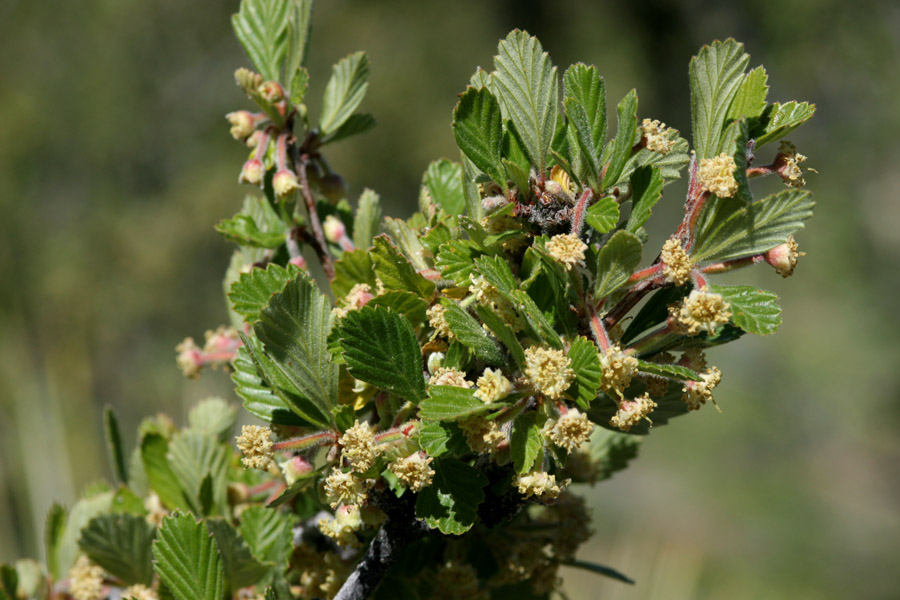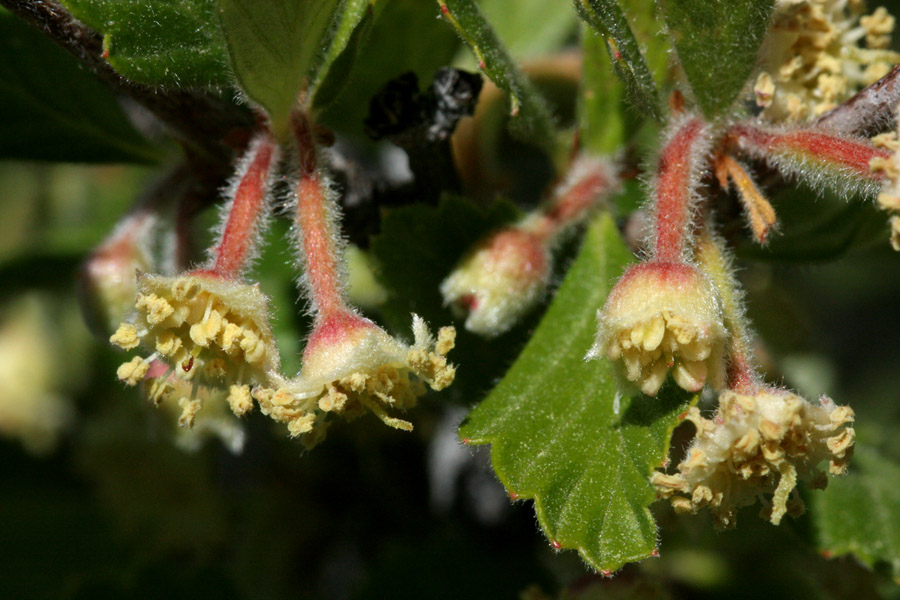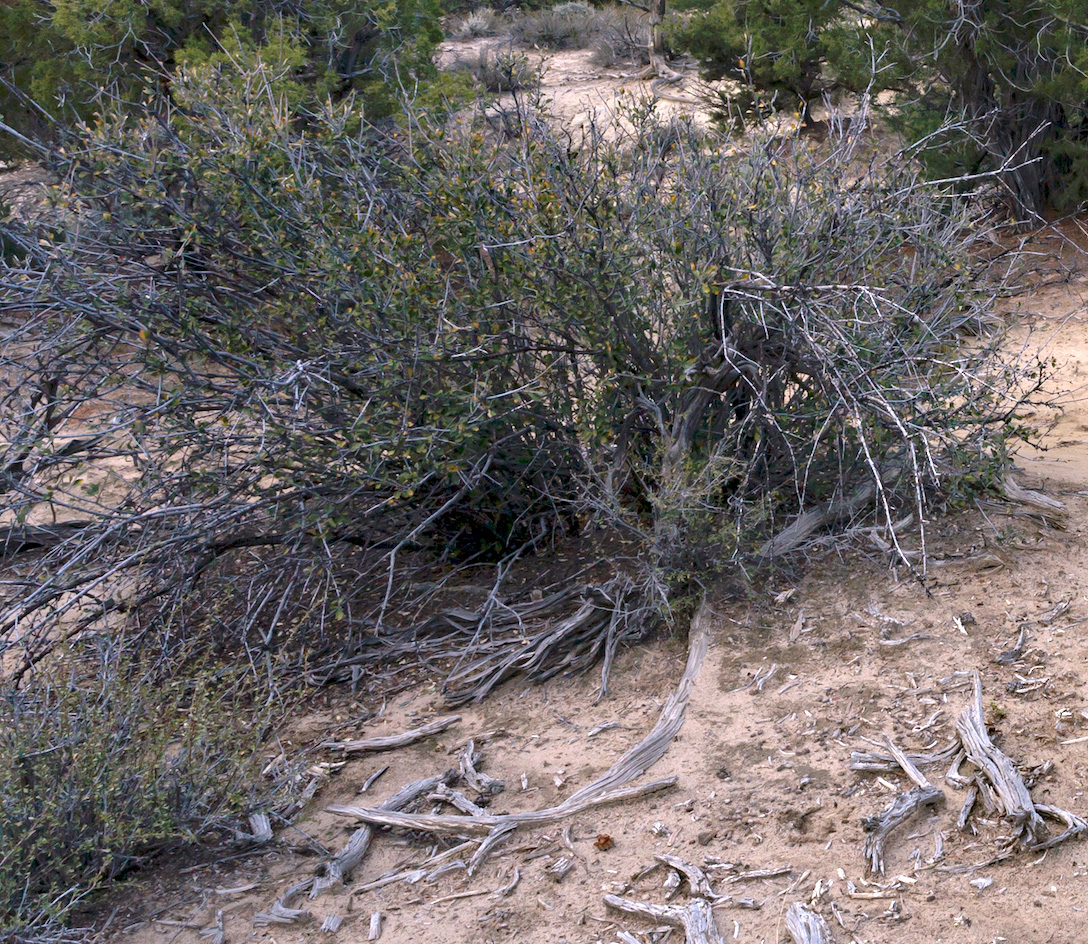Selected Plants of Navajo Rangelands
Mountain mahogany

Mountain mahogany is a shrub or small tree that grows from 2 to 20 feet tall, with upright or spreading branches. It flowers from May to June, and its fruits mature from July to September. It reproduces from seed and by root sprouts. Seed production is sporadic—the plants go as long as 10 years with no seed production. Mountain mahogany occurs on rocky bluffs, mountainsides, rimrock, breaks, and in canyons and open woodlands. It is common in swales where snow persists during the winter. It grows at elevations between 5,000 and 7,000 feet. It is heat and drought tolerant. It is also somewhat shade tolerant, but grows better without a forest canopy.
It is good to excellent forage for cattle, sheep, and goats. It is a good source of cover for livestock, big game, and many small mammals and birds. It is extremely valuable as winter browse for deer and bighorn sheep.
The twigs are palatable all year long, and are grazed heavily. However, the leaves may contain cyanogenic glycoside, which may cause hydrocyanic poisoning.
Wood from mountain mahogany has been used to make tools and war clubs, and its bark to make a reddish-brown dye for leather.


©2018 NMSU Board of Regents.
Individual photographers retain all rights to their images.
Partially funded by the
Western Sustainable
Agriculture Research and Education Program
(westernsare.org; 435.797.2257),
project EW15-023.
Programs and projects supported by Western SARE are
equally open to all people.